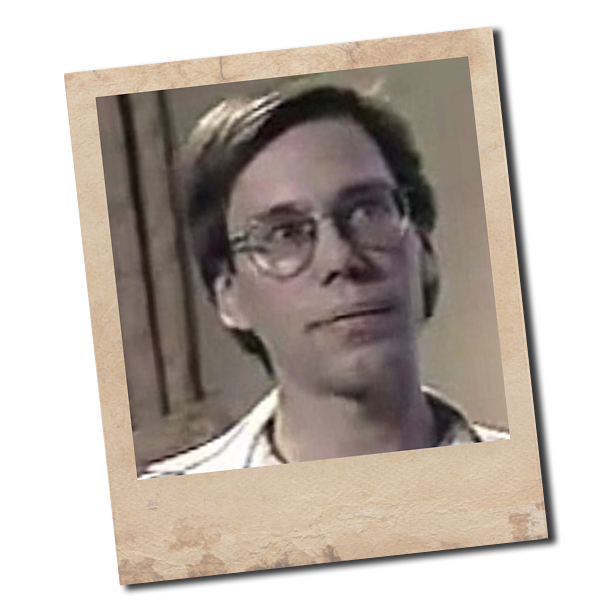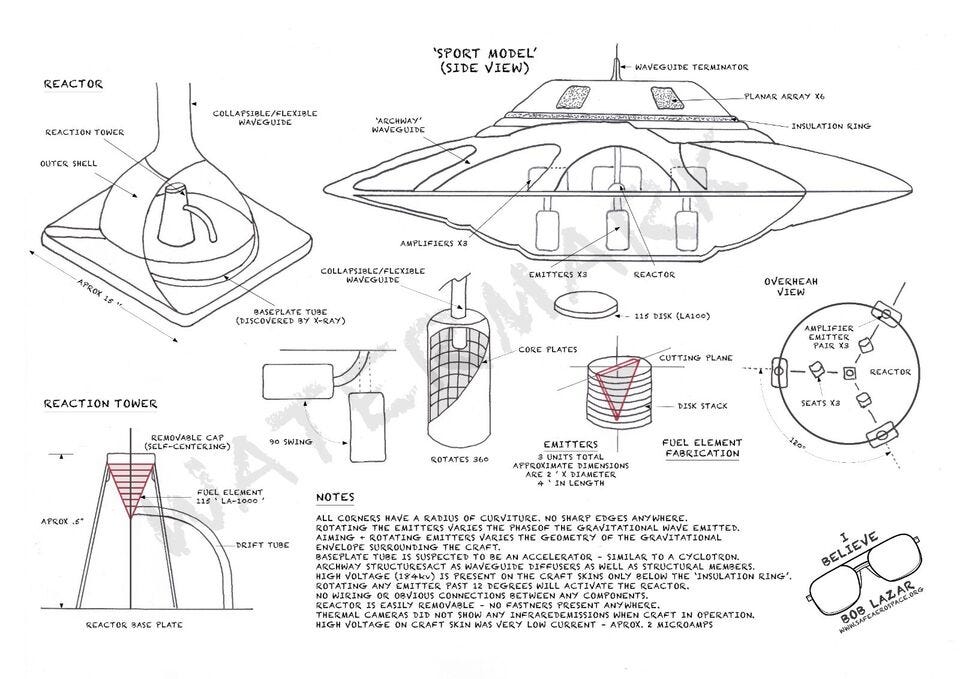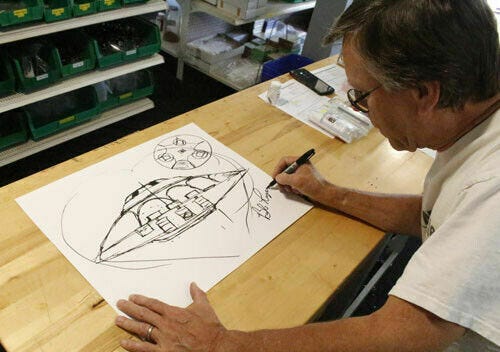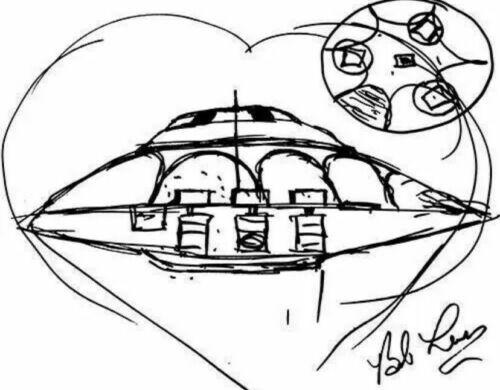🛸UFO Files: Bob Lazar - The Whistleblower Who Exposed Area 51’s UFO Secrets
Did a Nevada physicist expose the greatest secret in UFO history, or create one of its most enduring myths?
In 1989 a man appeared in a series of late-night television interviews that would become a defining moment in UFO history. He spoke with his face hidden in shadow, his voice distorted, and under the alias “Dennis.” He told Las Vegas journalist George Knapp of KLAS-TV that he had worked on non-human technology at a facility called S-4, a site he said was hidden near Area 51 in Nevada. The man described attempts to reverse-engineer the propulsion systems of recovered alien craft. Even in anonymity, his testimony provoked fascination and fear. Within weeks he abandoned the pseudonym, revealing himself as Robert Scott Lazar. He explained later that the security measures at S-4 had grown so suffocating, and the threats against him so intimidating, that he believed coming forward publicly was his only protection. In his view, once his identity was known, silencing him would only make his claims more credible. From that point on his life was bound to the lore of Area 51, and his name became inseparable from one of the most enduring controversies in modern UFO history.
How to support my work:
Lazar was born in 1959 in Coral Gables, Florida, and developed an early interest in science and engineering. By the late 1970s he had moved to California and gained a reputation as a backyard scientist, building rocket cars and jet engines in his spare time. He has long claimed to have studied physics at the Massachusetts Institute of Technology and electronics at the California Institute of Technology, though both institutions deny any record of his attendance. To critics this lack of documentation is a fatal flaw. To supporters it is further evidence of a government cover-up designed to erase his credibility. One thread of evidence places him at Los Alamos National Laboratory, where his name appeared in an internal phone directory and photographs placed him on-site, despite official denials that he ever worked there. Lazar himself insisted that his time at Los Alamos, and his work with advanced technology there, brought him to the attention of those who would later recruit him for S-4.
He recounted that recruitment began after a chance meeting with Edward Teller, the physicist often called the father of the hydrogen bomb. Teller had read about Lazar in a local newspaper after a piece on his jet-powered car, and when the two met at a conference Lazar introduced himself. Soon afterwards he was invited to apply for a role that was described only in vague terms, involving propulsion research of highly sensitive origin. The interview process, Lazar said, was unlike anything he had experienced. There were psychological evaluations and deeply probing questions, and he came away convinced that part of the purpose was to unsettle him as much as to test his suitability. Nevertheless, he was offered the position and accepted, eager to explore what he believed would be the most advanced science on Earth.
The facility he described was S-4, a secret installation built into the mountainside near Papoose Lake, its hangar doors disguised to blend into the rock. Inside were nine flying discs of different sizes and designs. To Lazar this suggested either multiple sources or long-term recovery efforts. The craft he was assigned to study was known as the Sport Model, a metallic saucer roughly fifty-two feet in diameter. Inside it were three small seats, sized for beings shorter than the average human, and a spartan interior devoid of wires, switches, or visible controls. He was struck by how alien the design appeared, and he believed it had not been built for humans.
The propulsion system, he said, was unlike anything in human science. The craft used a then-unknown element which he called Element 115. When bombarded with protons, it generated a powerful gravitational field that could be amplified and directed by the craft’s systems. This allowed the disc to distort space-time itself, falling into gravity wells of its own making and moving instantaneously across vast distances. In practice this meant the craft could hover soundlessly, make right-angle turns at extraordinary speed, and accelerate without the inertial stresses that would kill a human pilot in an ordinary aircraft. The system bent light as well as gravity, rendering the disc nearly invisible both to radar and to the human eye.
Life at S-4, according to Lazar, was dominated by secrecy and compartmentalisation. Workers were flown to Area 51 on unmarked Janet aircraft, then transferred under heavy guard to the facility. He claimed that on some journeys he was blindfolded to prevent him from learning the exact location. Once inside, staff were kept isolated, each given access only to their narrow field of work. Lazar said he was monitored constantly, and that intimidation was routine. He described colleagues disappearing without explanation, and he came to believe they had been removed after asking too many questions. He alleged that he was sometimes given drinks he believed to be drugged, followed by interrogations designed to destabilise him. He spoke of unexplained absences, weeks at a time when he was barred from the site with no explanation, which he interpreted as a tactic to unnerve him. Employees were discouraged from forming personal bonds, leaving them isolated and easier to control.
Despite the restrictions, Lazar claimed he witnessed test flights of the Sport Model. At night the craft would rise silently into the air, hover, and perform abrupt manoeuvres that no known aircraft could replicate. He described them as noiseless, without exhaust or heat signature, shifting direction instantly and accelerating to immense speeds. He also said he saw experiments in which gravity was manipulated, with objects suspended in mid-air or propelled by unseen forces. Briefing documents he claimed to have read suggested that the craft originated from extraterrestrial visitors, specifically from Zeta Reticuli, a binary star system about thirty-nine light-years from Earth. He never claimed to have seen the beings themselves, but he believed the craft and its design left little doubt of non-human origin.
The decision to reveal his story to Knapp in 1989, first as “Dennis” and then under his own name, was driven by fear and conviction. Lazar said he believed secrecy offered him no safety and that speaking publicly was the only way to protect himself. Once identified, he described the craft, the propulsion systems, and the atmosphere of secrecy at S-4. The interviews made him an overnight sensation among UFO researchers and an instant target for sceptics.
Investigators attempting to verify his account found themselves in a web of contradictions. His academic claims could not be substantiated, though his name at Los Alamos proved harder to dismiss. The mention of Element 115 was particularly divisive. When Lazar first described it, the element was unknown. In 2003 Russian scientists synthesised it, though only for a fraction of a second and in highly unstable form. To Lazar’s supporters this was vindication. To his critics it was irrelevant, as the isotope produced was nothing like the stable fuel he had described.
After going public, Lazar said his life descended into harassment and surveillance. He claimed to have been followed, his phones tapped, and his businesses targeted. He said government agents intimidated him, erased his records, and sought to discredit him. The most dramatic episode came in 2017 when his scientific supply company was raided by the FBI. The official explanation was a search for hazardous materials, but Lazar believed it was an attempt to recover a sample of Element 115 he had once smuggled out of S-4. He insisted that he no longer possessed it, but he regarded the raid as proof that his story still mattered to those in power.
Theories abound about why Lazar was targeted. Some see a campaign to discredit a whistleblower whose claims, if true, would expose one of the greatest secrets in history. Others argue he revealed too much about a programme of reverse-engineering alien craft. Another view holds that he was used as part of a deliberate misinformation campaign, his testimony seeded to confuse researchers and obscure genuine secrets. More conventional voices believe he was exposed to highly classified defence projects, alien or not, and that the measures against him were simply the government’s way of guarding national security.
For Lazar the consequences were lasting. He has said that his decision to come forward brought only difficulty, ostracism, and fear. Yet through decades of scrutiny he has never retracted his central claims. He has often expressed regret, wishing he had never spoken out, but maintains that what he saw at S-4 was real.
His story has been retold in documentaries, books, and television programmes, most prominently in the 2018 Netflix film Bob Lazar: Area 51 and Flying Saucers. In 2019 his appearance on The Joe Rogan Experience brought his account to a new audience of millions. In that interview he appeared reluctant, weary of the attention, but still unwavering in his testimony.
The controversy has endured for more than three decades. To some, Lazar is a courageous whistleblower who exposed the greatest government cover-up of all time. To others, he is a fabricator or a pawn. His accounts of S-4, the Sport Model, Element 115, the intimidation, and the Zeta Reticuli connection may never be proven, but they remain inseparable from the mythology of Area 51. Whether he revealed a hidden truth or told an elaborate fiction, Bob Lazar shaped the way the world views secrecy, UFOs, and the possibility of alien technology. His name continues to surface wherever questions of government concealment and extraterrestrial contact are raised.
I highly recommend this Bob Lazar documentary:








